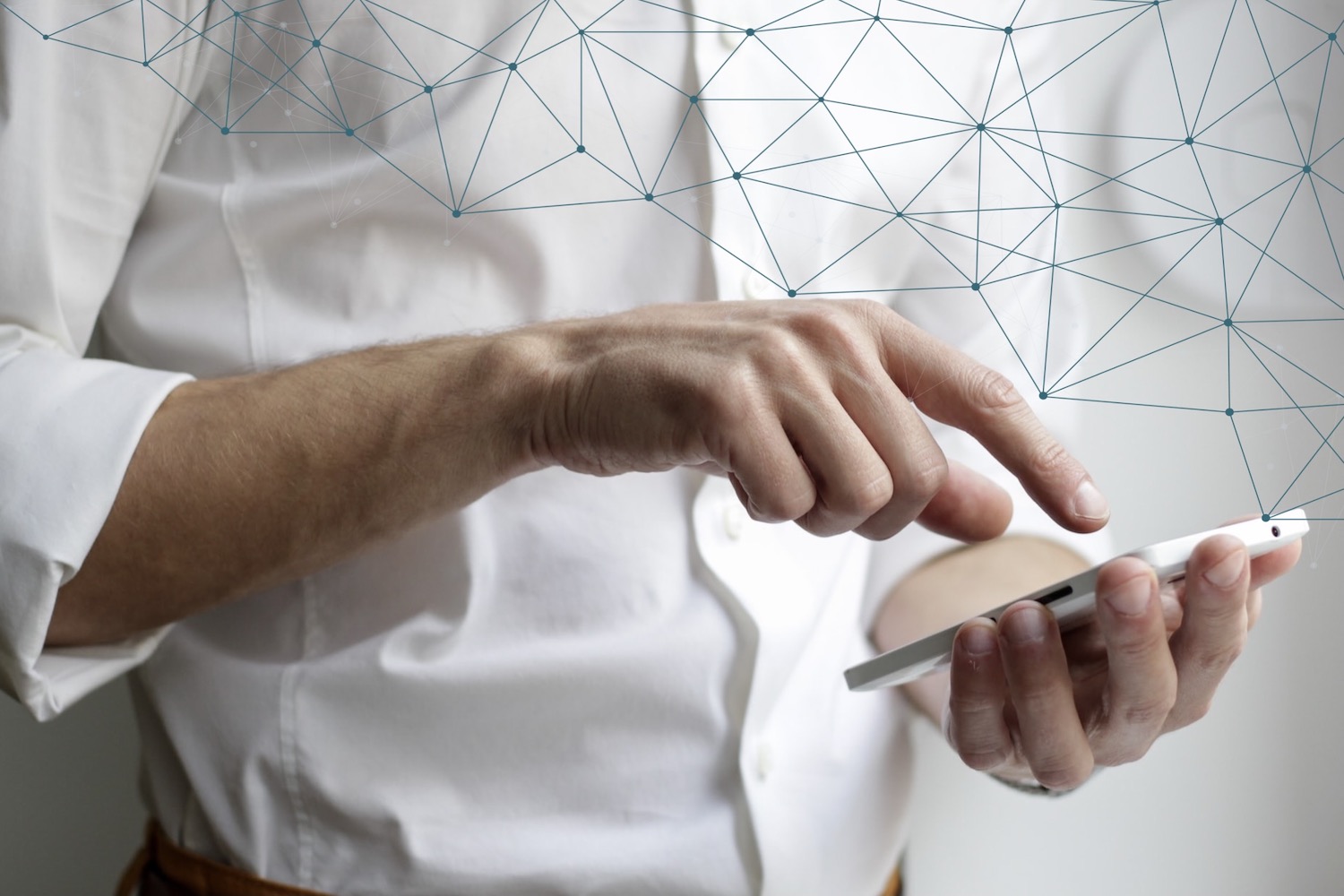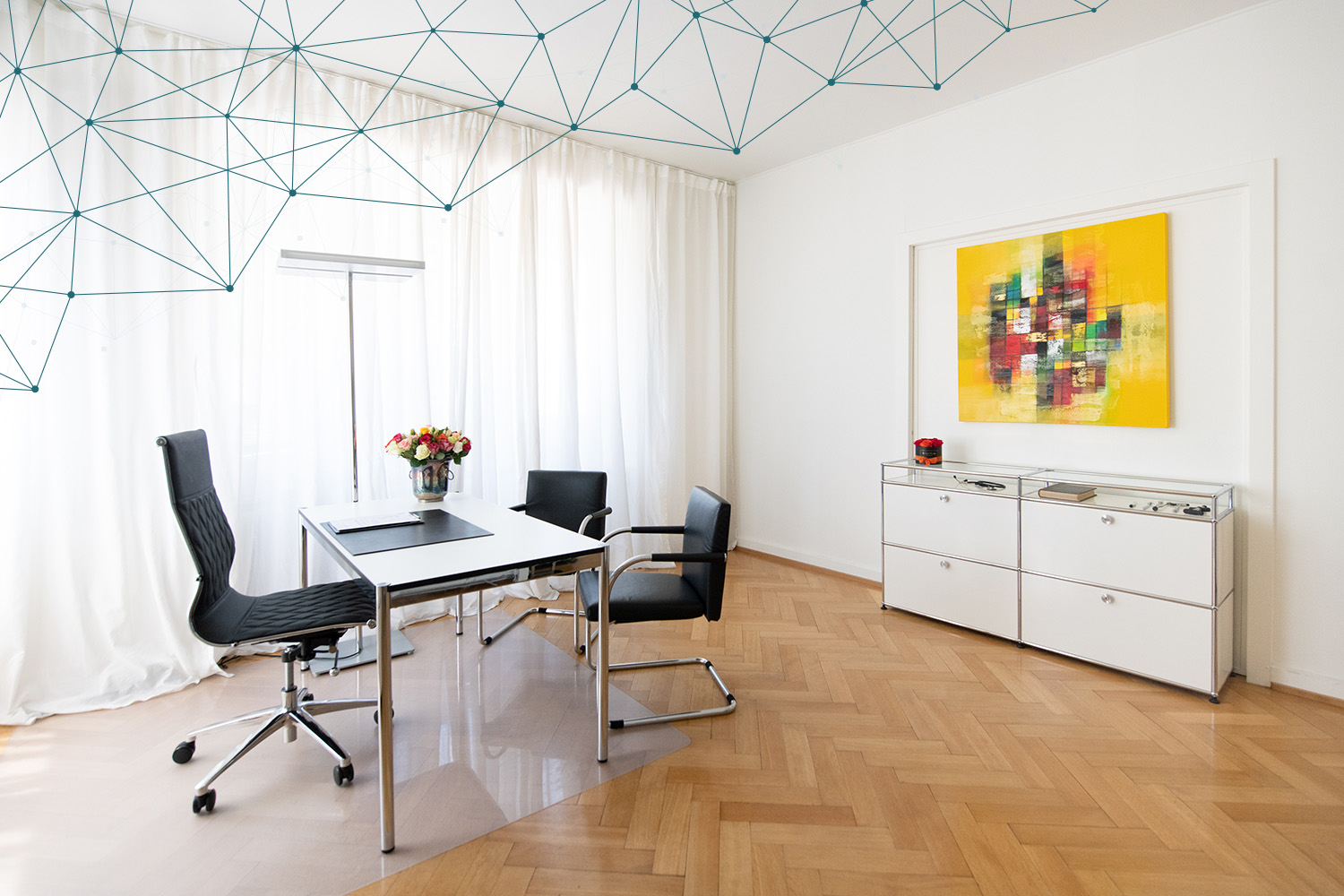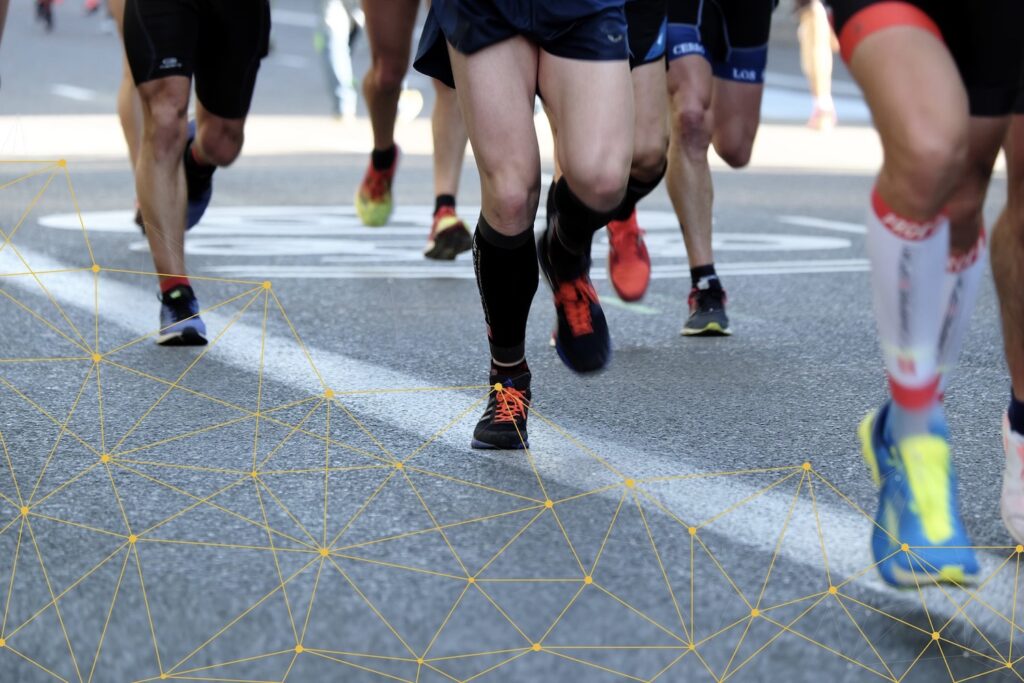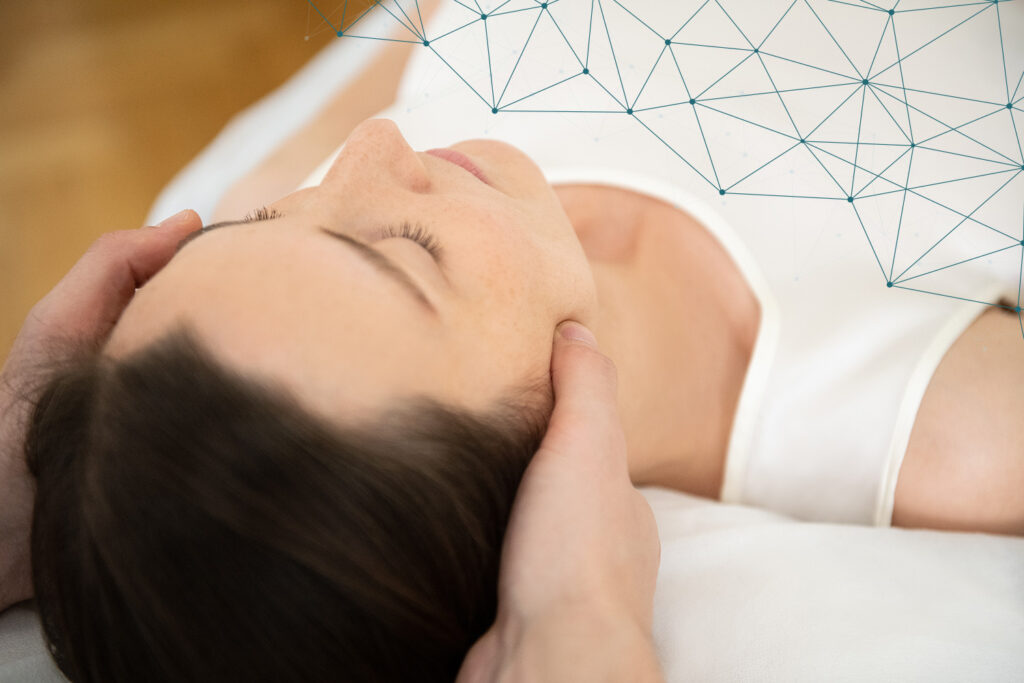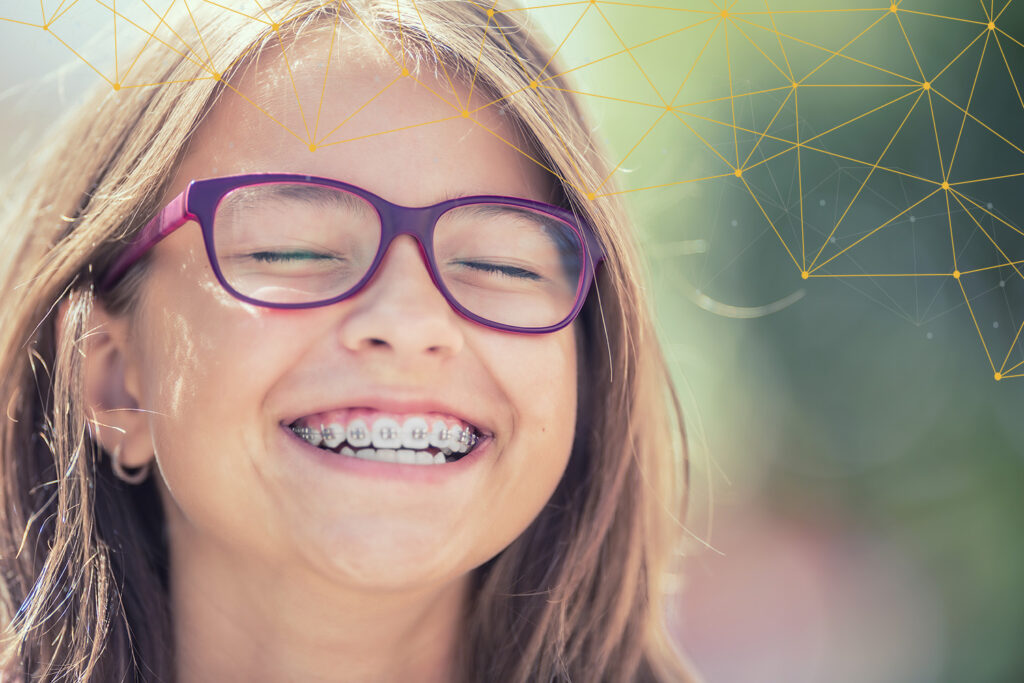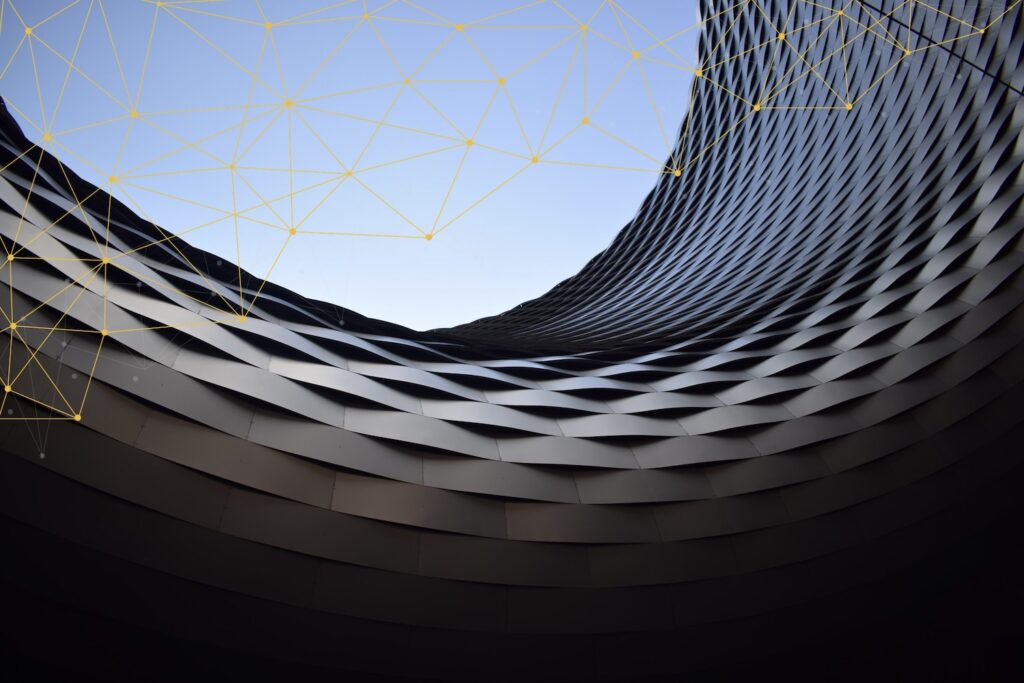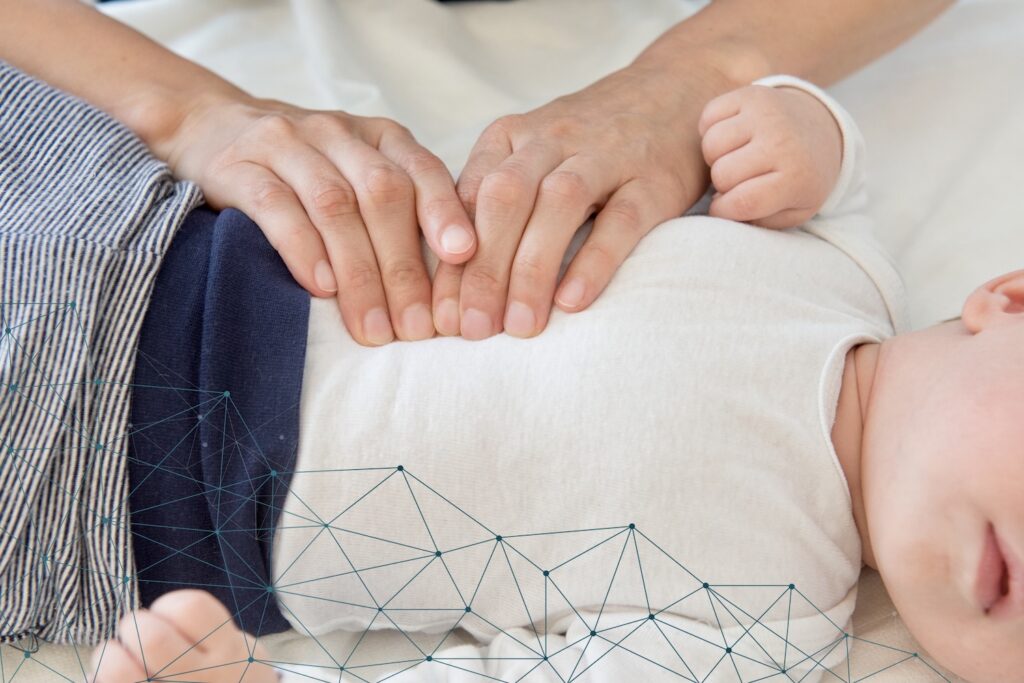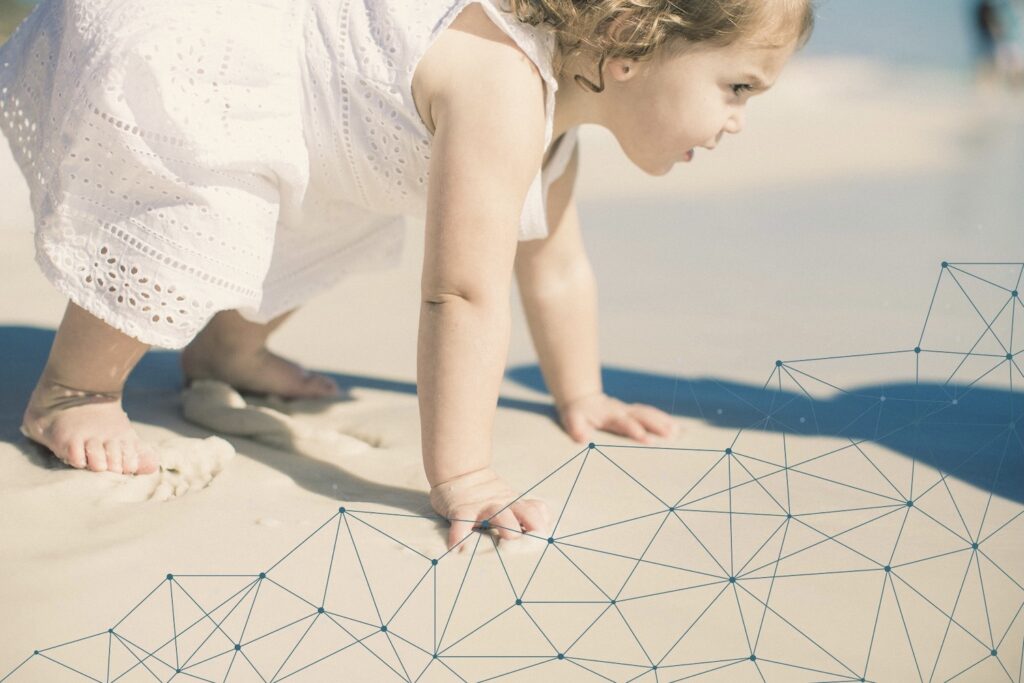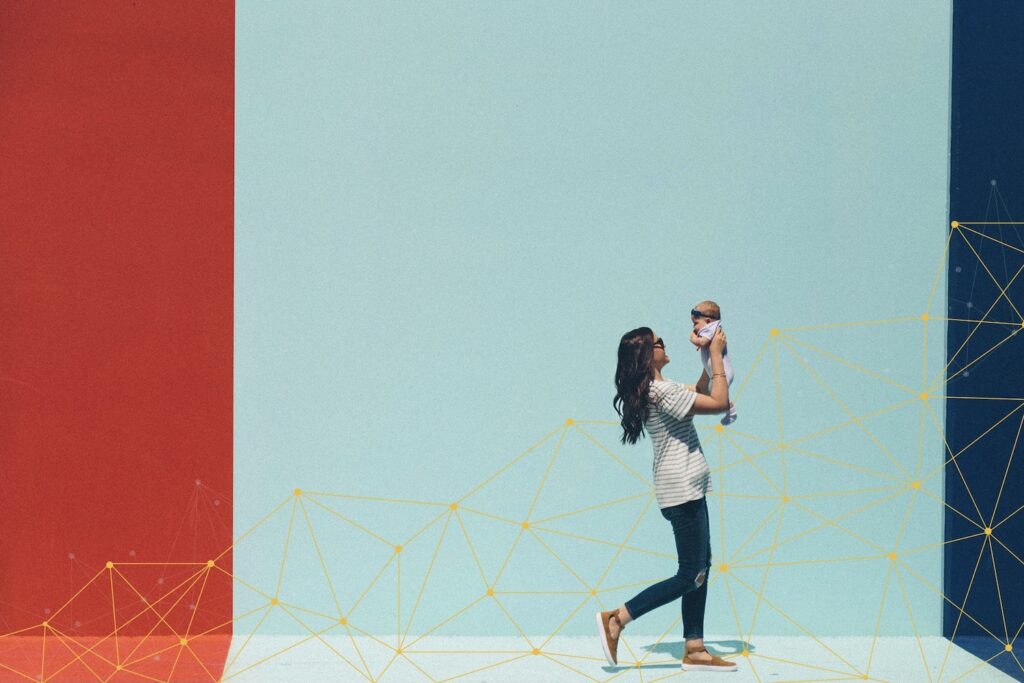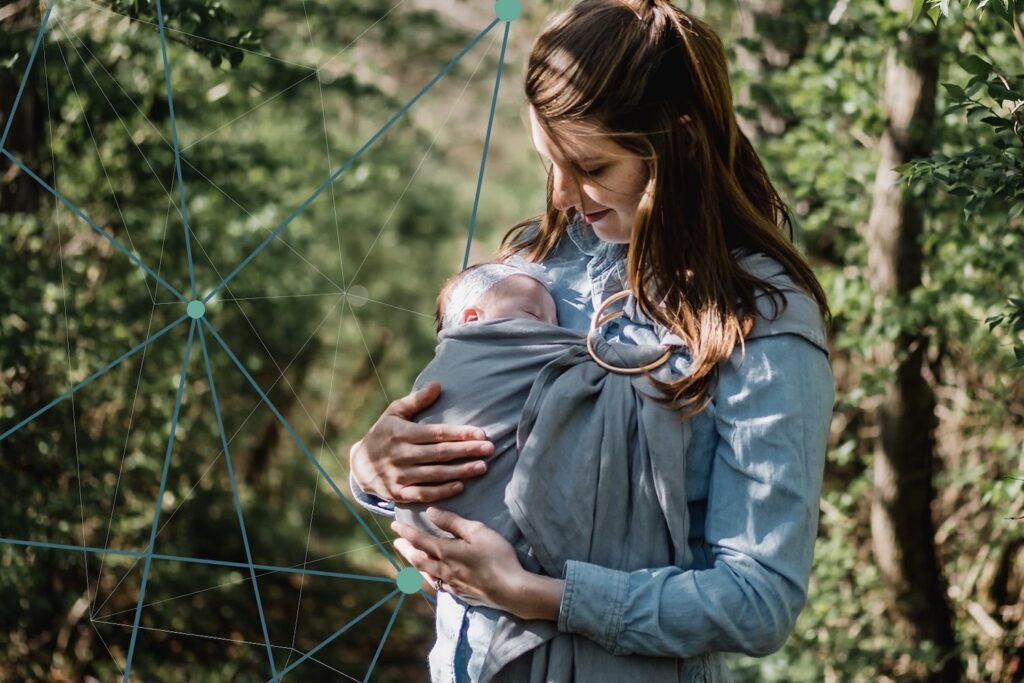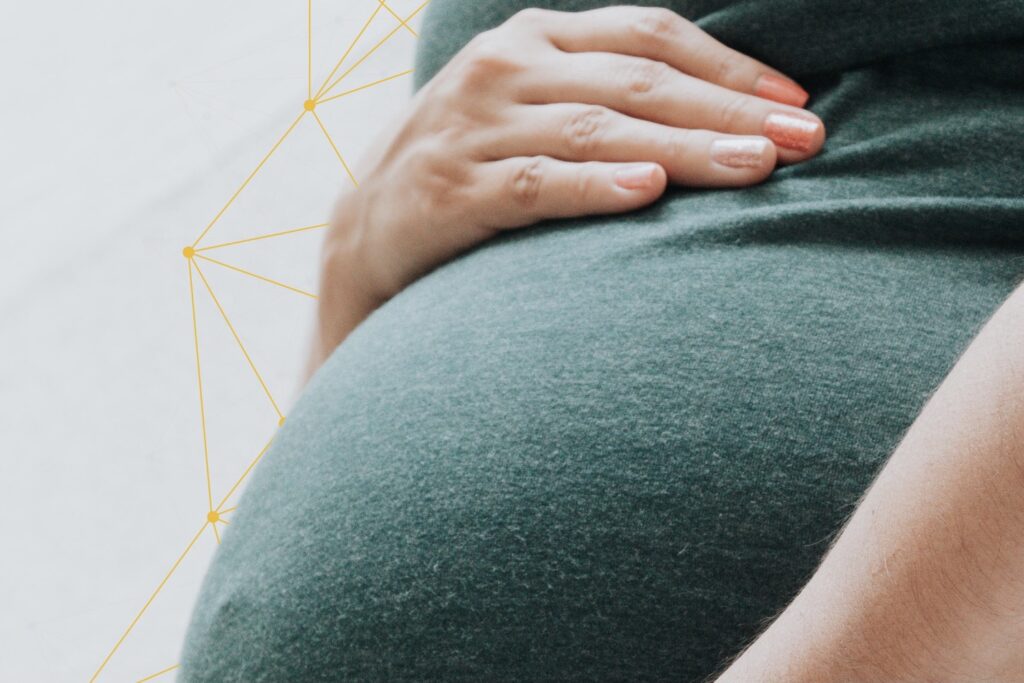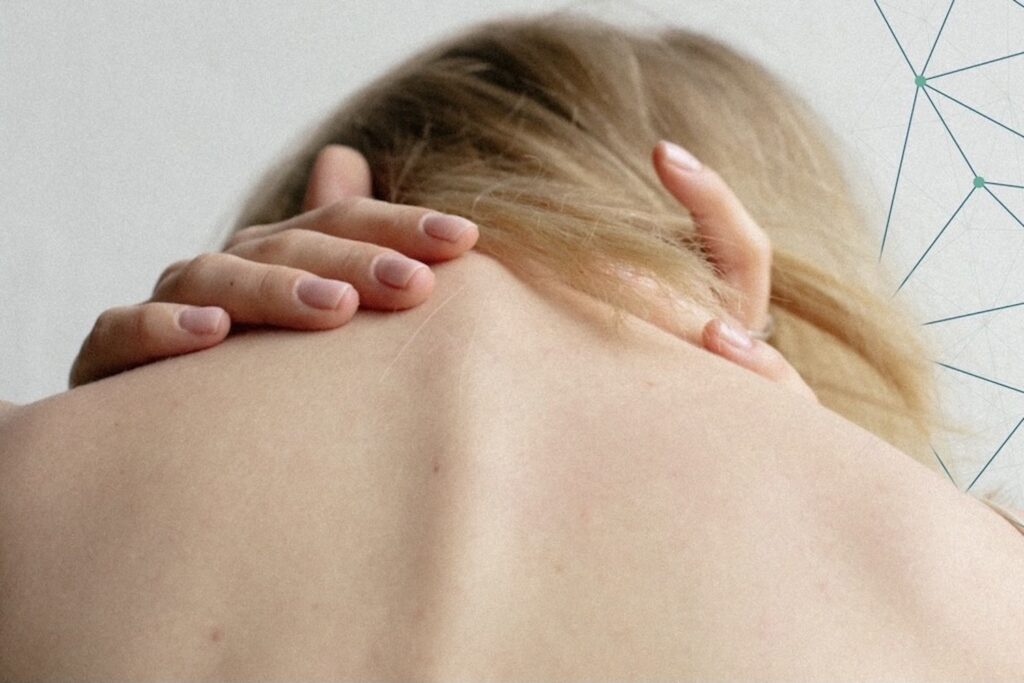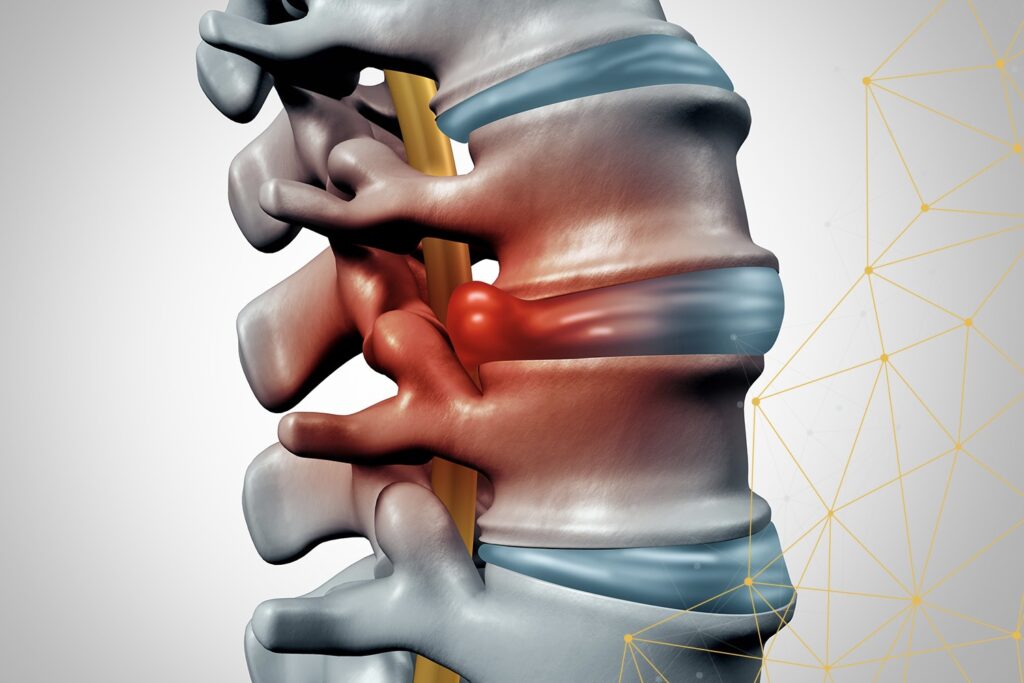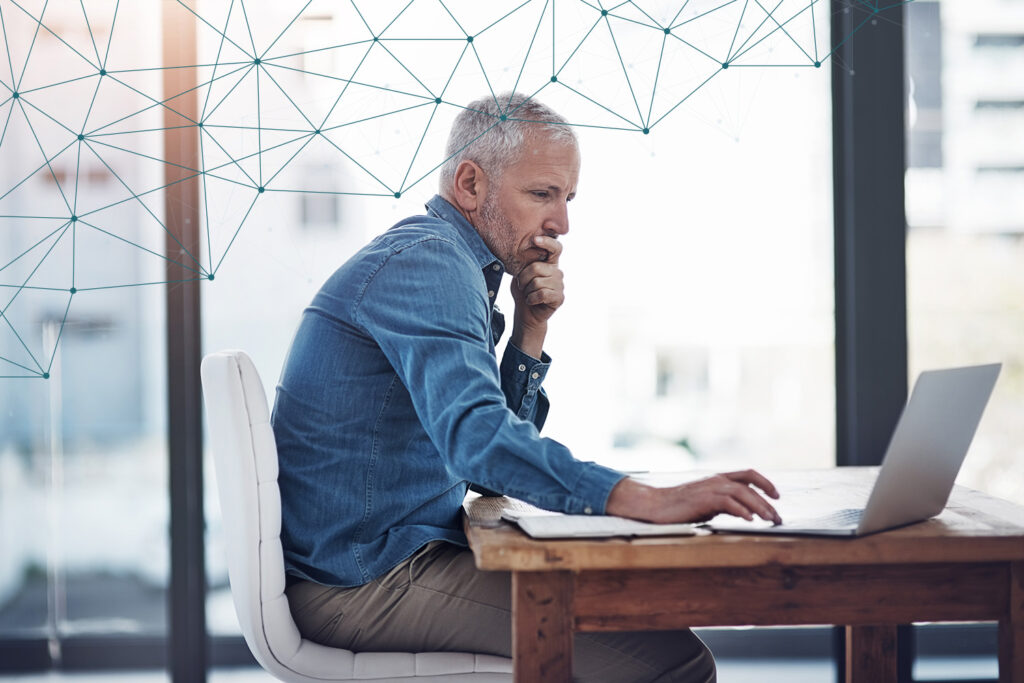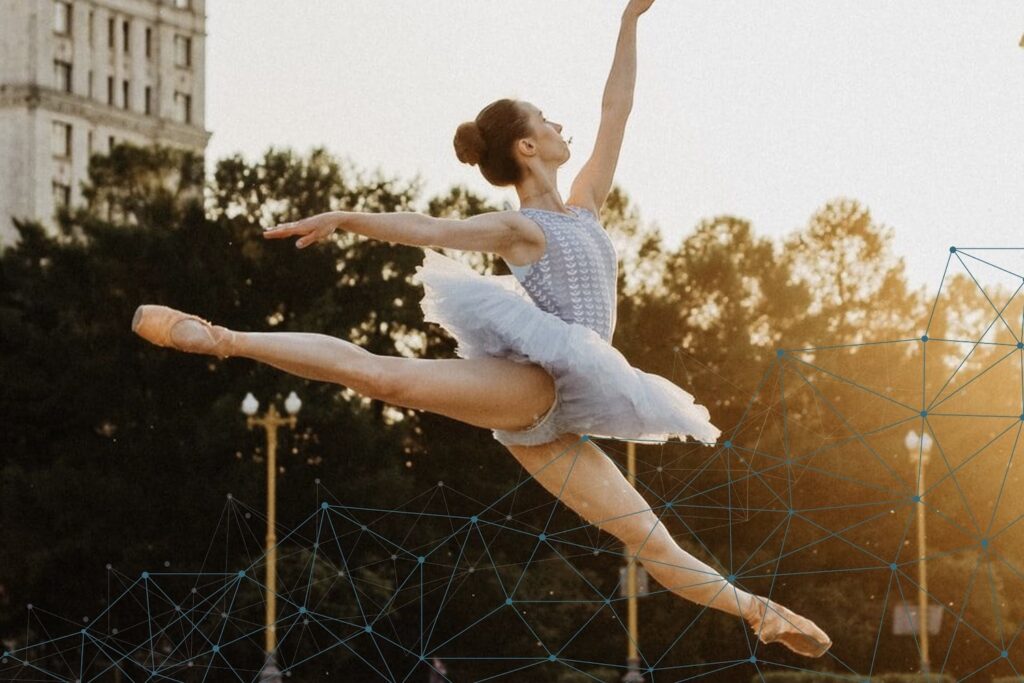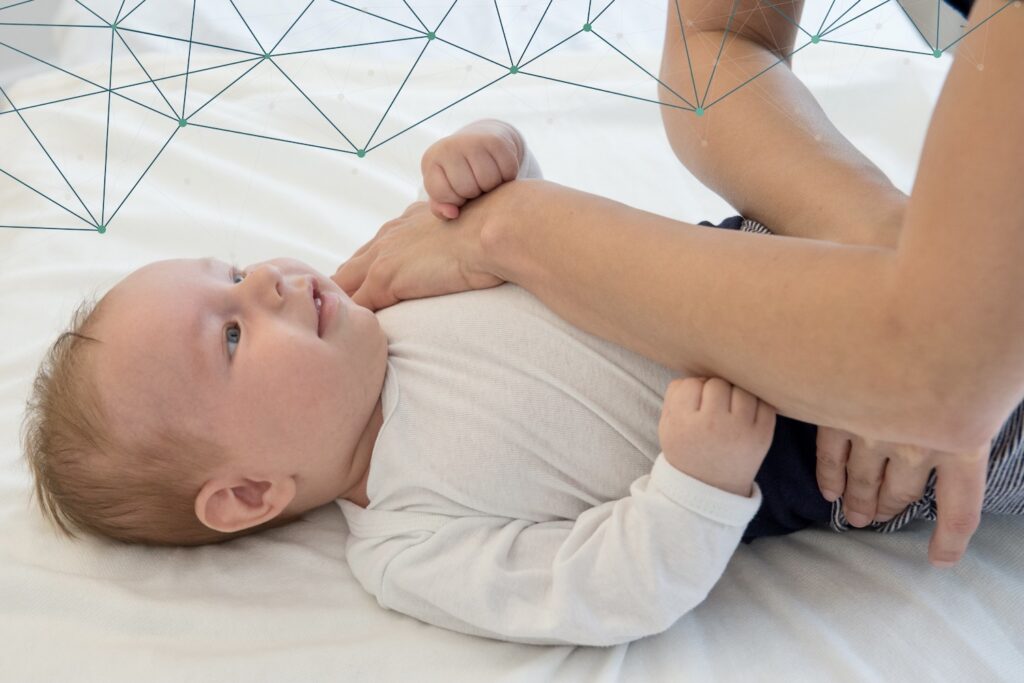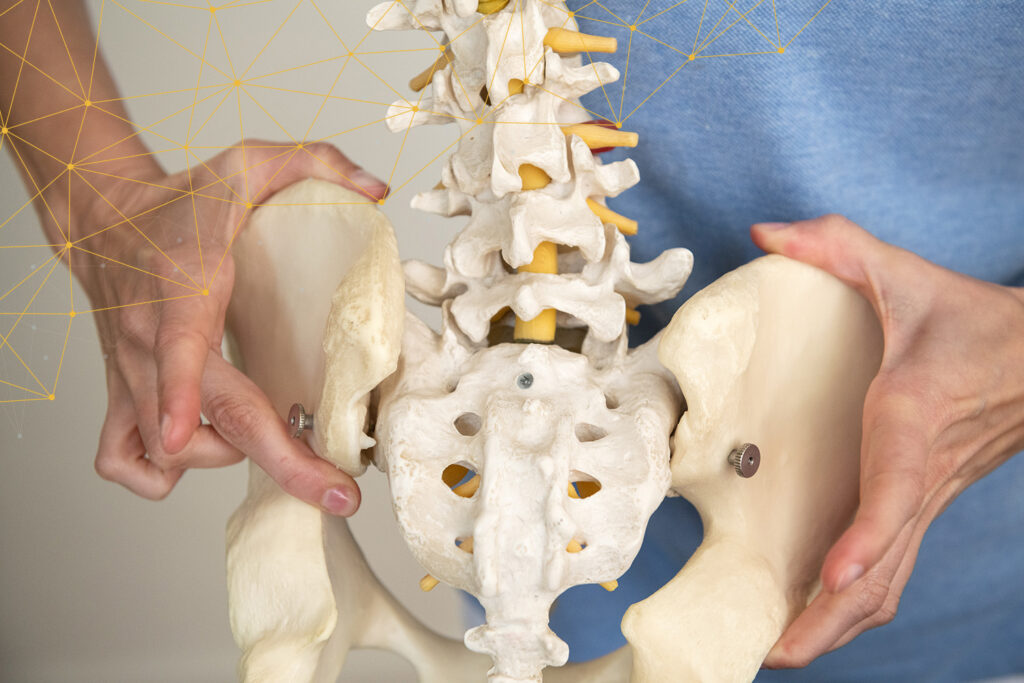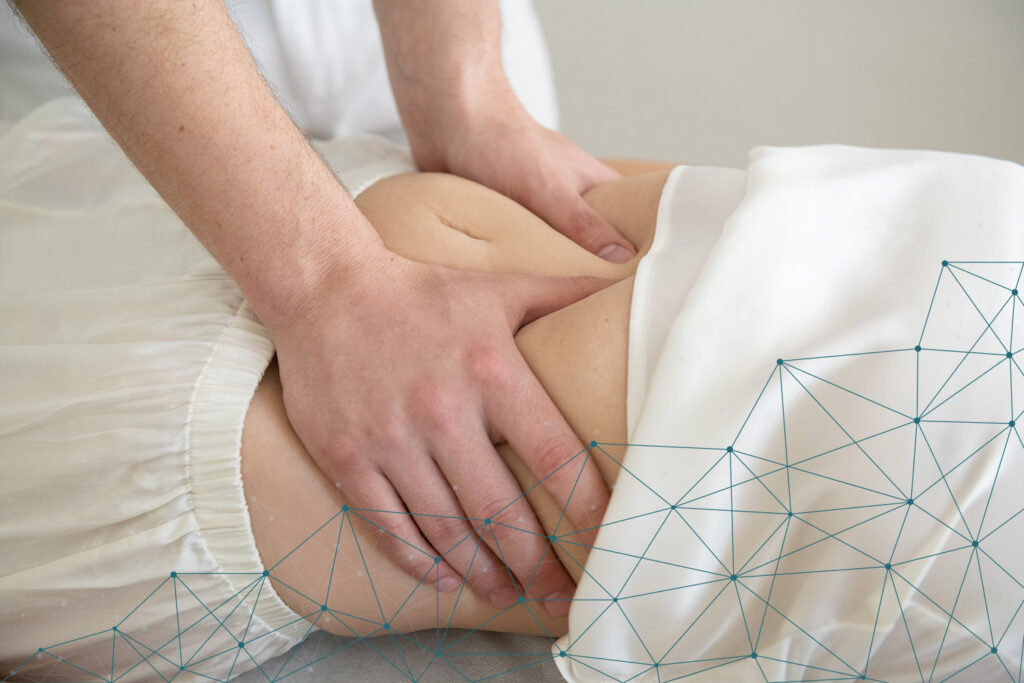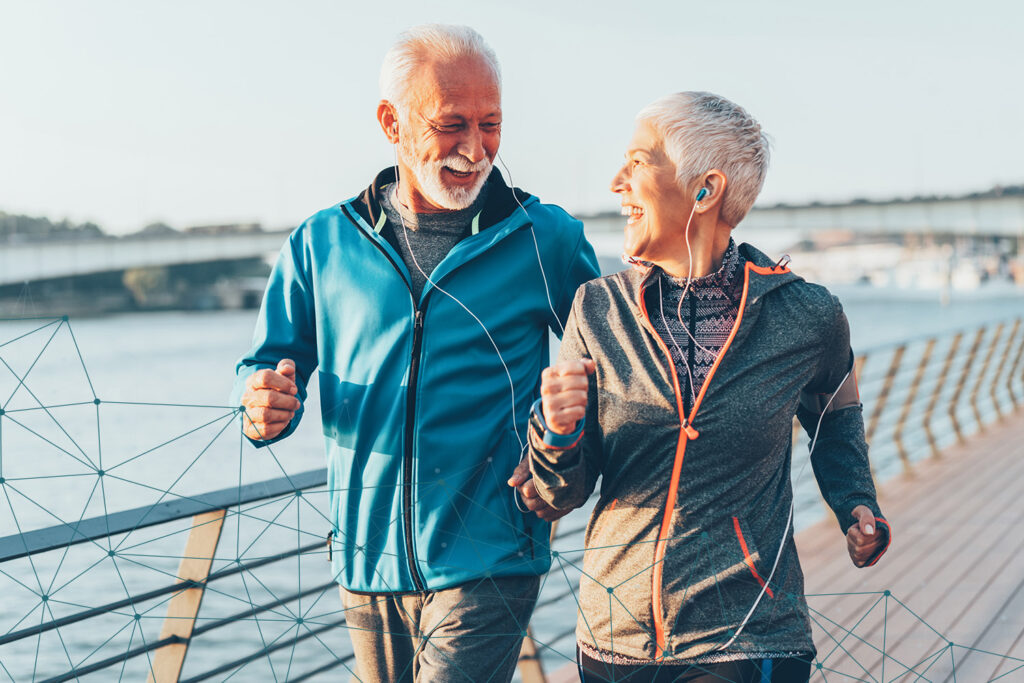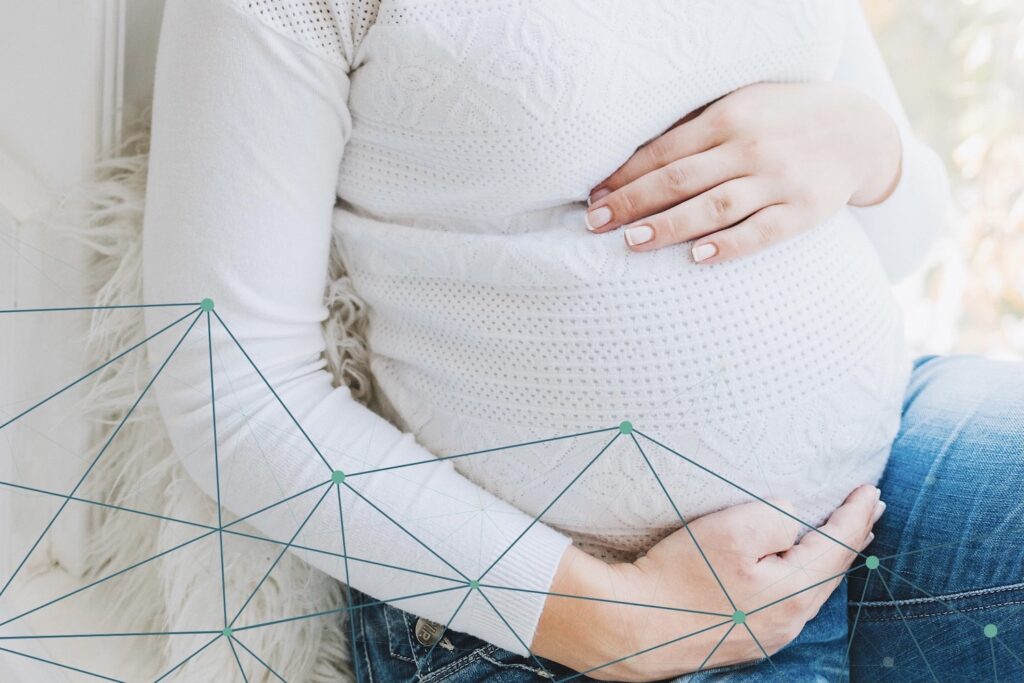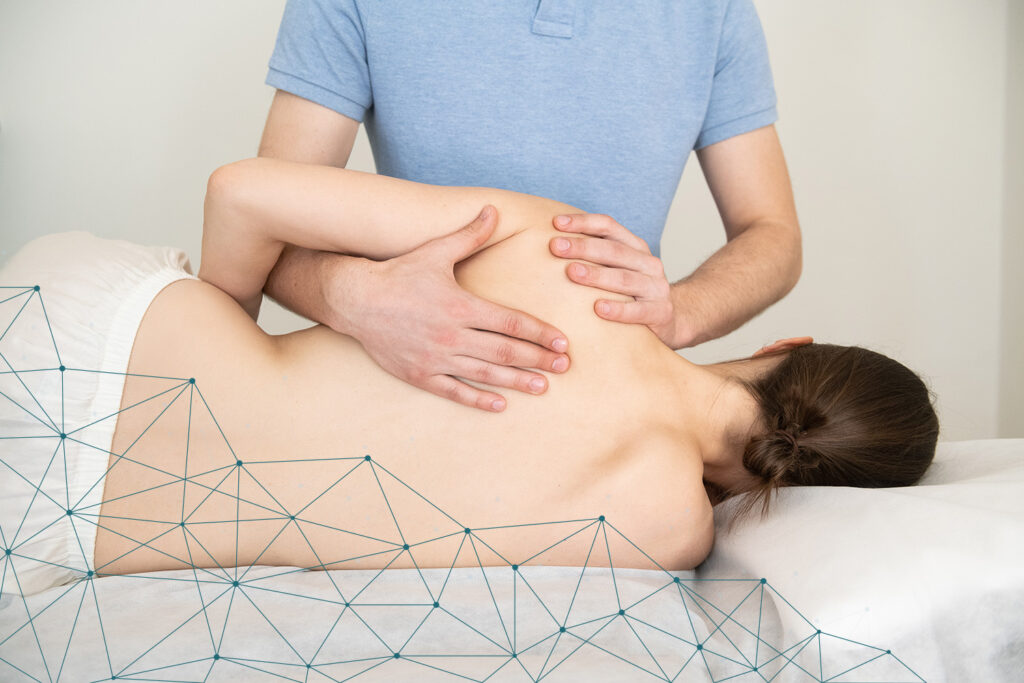Changing posture – birth to old age
Pregnancy and newborns
During pregnancy, the foetus is in the uterus and floats in the amniotic fluid. After birth, the body has to adapt to the laws of gravity.
Due to the curved fetal position in the uterus, the newborn has a curved spinal curvature without a curvature shaping the cervical and lumbar spine.
The characteristic curvatures of the adult spine are only partially present in the newborn and only appear in the course of postnatal development. This is thanks to the entire process of neurological and motor development. This allows the transformation of the baby’s primary flexion into a complete and easily maintained double S-curve of the spine that we see in adulthood.
From three months
At the age of three months, the neck lordosis begins to develop in order to balance the head. Raising the head strengthens the back muscles, which leads to more stable sitting, standing and walking. (This is why the prone position is so important for newborns).
Comparison with vertebrates
Evolution and development of the human spine over the centuries. When comparing the anatomy of all vertebrates, humans are the only vertebrates with a balanced spine with three curves.
The curvature in the lower part of the back does not occur in any other species. Humans are the only species capable of maintaining an upright position without the aid of attributes such as a tail (kangeroo) or wings (birds).
Man in upright posture
Standing in an upright position allows people to use their arms, which leads to a great variation in fine and gross motor tasks.
Unfortunately, this upright position also comes at a price. This vertical position increases the work of the heart, increases the strain on the human body and reduces the stability of the body.
In our western world, sitting is one of the most common activities. Sitting more or less removes the legs from their support function, leaving the pelvis as the main support for the segmented tent pole of the human spine. This balancing mechanism leads to a devolution of the spine.
Wrong sitting position as a habit
Unfortunately, when our stabilising muscles are no longer strong enough, an incorrect sitting position becomes a habit. This slumped sitting position results in the following posture: the head comes forward by bending the lower cervical vertebrae, the upper neck goes into hyperextension, the chest and the front of the ribcage are fixed in the exhalation state, the pelvis rolls back, resulting in a flattened lumbar spine (flexion movement).
Stress on the intervertebral discs
When the lumbar spine moves into flexion, the intervertebral discs are loaded twice as much as when standing, which can lead to a great chance of lumbago and herniated discs.
Consequences of poor posture
The influences of our modern life on a normal healthy person are extreme. Due to increasing working hours, stress, reduced physical activity etc., muscle weakness and shortening can be found in almost every human body.
These muscular imbalances form the basis of many injuries such as muscle pain, strains, overuse injuries and early degeneration problems.
Avoid back problems in the long term
Good posture not only reduces stress on the joints and reduces overuse injuries by increasing the cushioning capacity of the human body, but it also supports the multiple activities of the diaphragm (diaphragm).
In other words, poor posture can affect the biomechanics of the spine and its extremities and cause functional and structural problems, but also lead to respiratory difficulties, poor circulation and even reflux.
If you want to avoid back problems in the long term, it would make sense to incorporate more smaller movement units into your everyday life and to start with targeted back training. Even a few simple, everyday exercises for stabilisation and strengthening have a preventive effect.
Haben Sie Fragen zur Osteopathie
und wünschen Sie einen Termin?
Kontaktieren Sie uns per Telefon. Gerne besprechen wir mit Ihnen, wie wir Sie oder Ihr Kind unterstützen können.
Do you have any questions
and would you like an appointment?
Contact us by phone. We would be happy to discuss with you how we can support you or your child.
